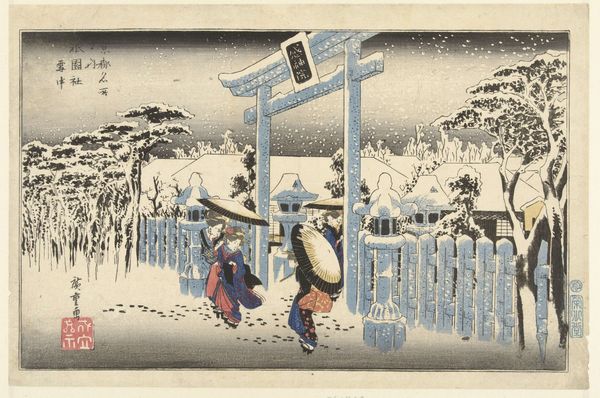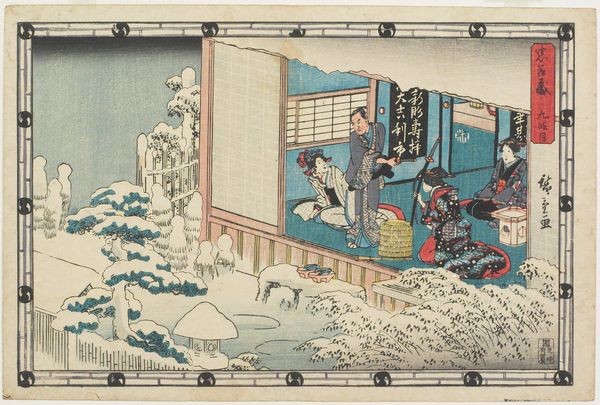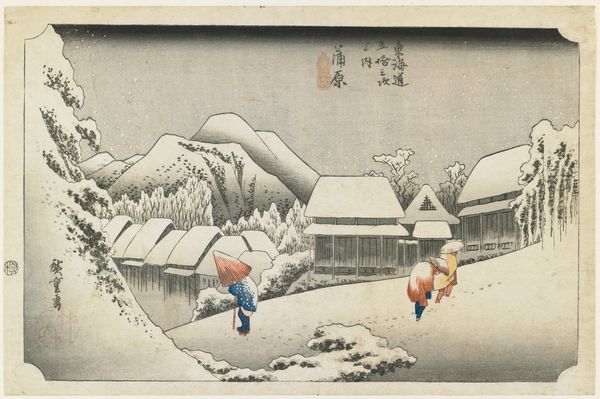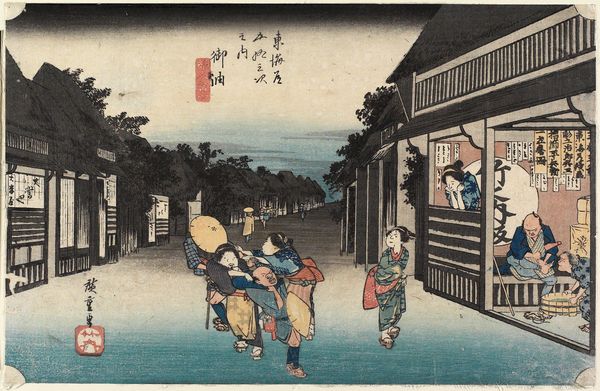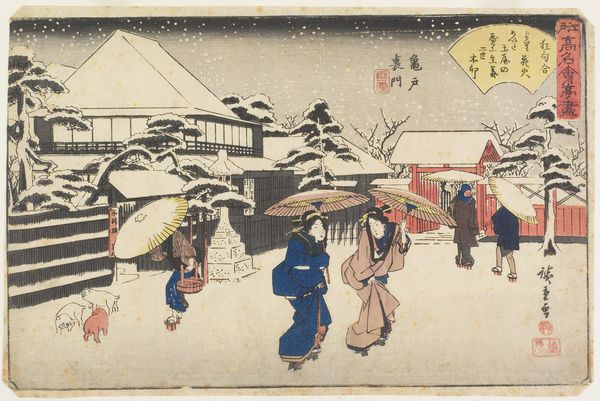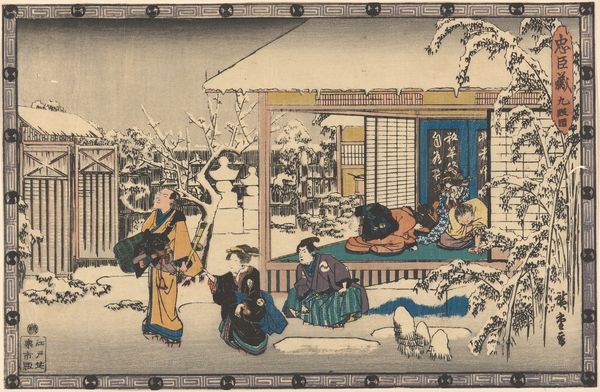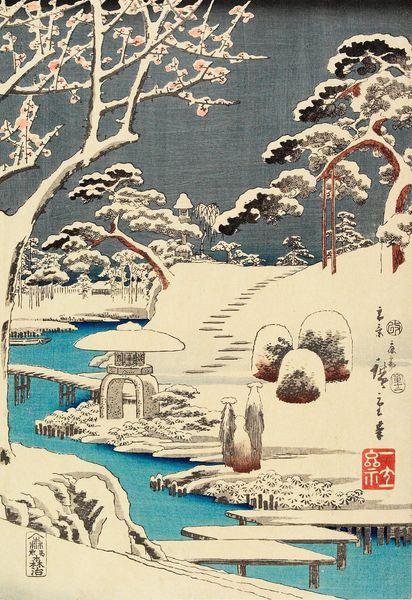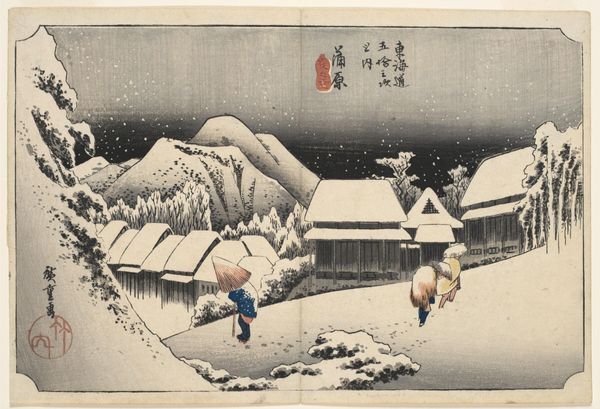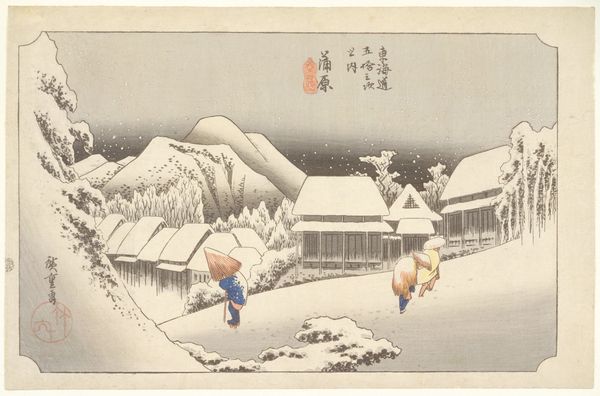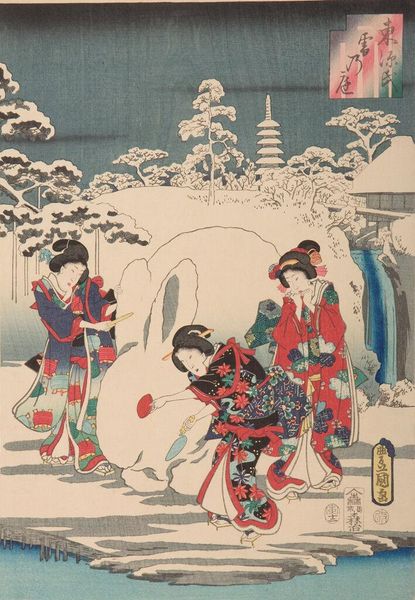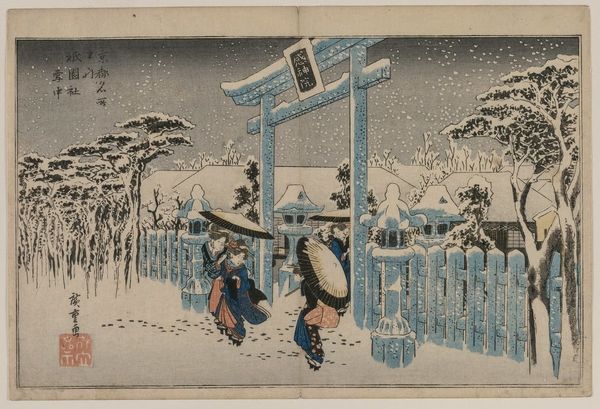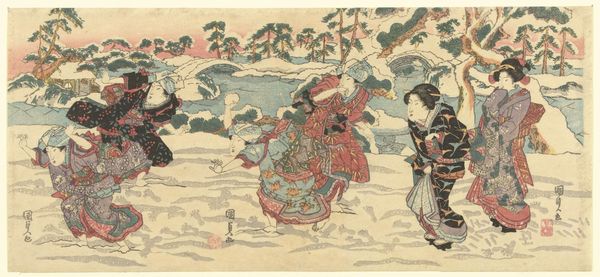
The Warrior Satō Tadanobu Defeats Priest Kakuhan in the Mountains of Yoshino c. 1835 - 1839
0:00
0:00
print, ink, woodblock-print
#
narrative-art
# print
#
asian-art
#
landscape
#
ukiyo-e
#
japan
#
figuration
#
ink
#
woodblock-print
Dimensions: 9 5/8 × 14 1/16 in. (24.5 × 35.7 cm) (image, horizontal ōban)
Copyright: Public Domain
Curator: This woodblock print, created circa 1835 to 1839, is titled "The Warrior Satō Tadanobu Defeats Priest Kakuhan in the Mountains of Yoshino," by Utagawa Hiroshige. What's your initial reaction? Editor: Stark! The palette is so restricted – primarily the blues, blacks, reds, and white of the snow, which amplifies the violence unfolding. The scene feels both dynamic and frozen, like a moment snatched from a play. Curator: The power of this piece lies in its materiality. Think about the skilled artisans required to create this print. Multiple blocks, each painstakingly carved and then meticulously registered to layer color and line, it represents a remarkable collaboration of labor. Editor: Absolutely. Woodblock prints like this served a vital purpose, documenting and disseminating stories like this one of loyalty and prowess across 19th-century Japan. The Minneapolis Institute of Art has chosen to make this imagery available for study which serves a democratizing function, opening conversations and education for all who want it. Curator: Look closely, and you will also observe the narrative power that results from the manipulation of materials: The dynamic curve of the warrior's blade is a direct contrast to the solid block of the gate's architecture which suggests the different material and power relations in that very space. Editor: Exactly. The visual cues also speak volumes. The temple looming above the fighting emphasizes the institutional aspect, religion and martial prowess inextricably intertwined within Japan's cultural and political landscape. Curator: What fascinates me is the commodification of nature depicted. The snow isn't just snow; it is a specific material used to highlight conflict while still underscoring beauty which is further circulated to the marketplace for popular consumption. Editor: Ultimately, the reception of "The Warrior Satō Tadanobu Defeats Priest Kakuhan" has transformed across time as it hangs on museum walls. Now, as visitors, we can engage and debate how such images played an integral role in structuring power and values during the Edo period, making accessible an essential dimension of Japanese socio-political history. Curator: An excellent point. These considerations of materiality allow a deeper connection to both the original makers, the consumers, and even the present reception, enriching its relevance. Editor: Yes. I feel I have come to a much more considered response to my first reaction of stark beauty, with more insight as to its historical context, and the journey this work has travelled through various settings to arrive here in our view.
Comments
No comments
Be the first to comment and join the conversation on the ultimate creative platform.
